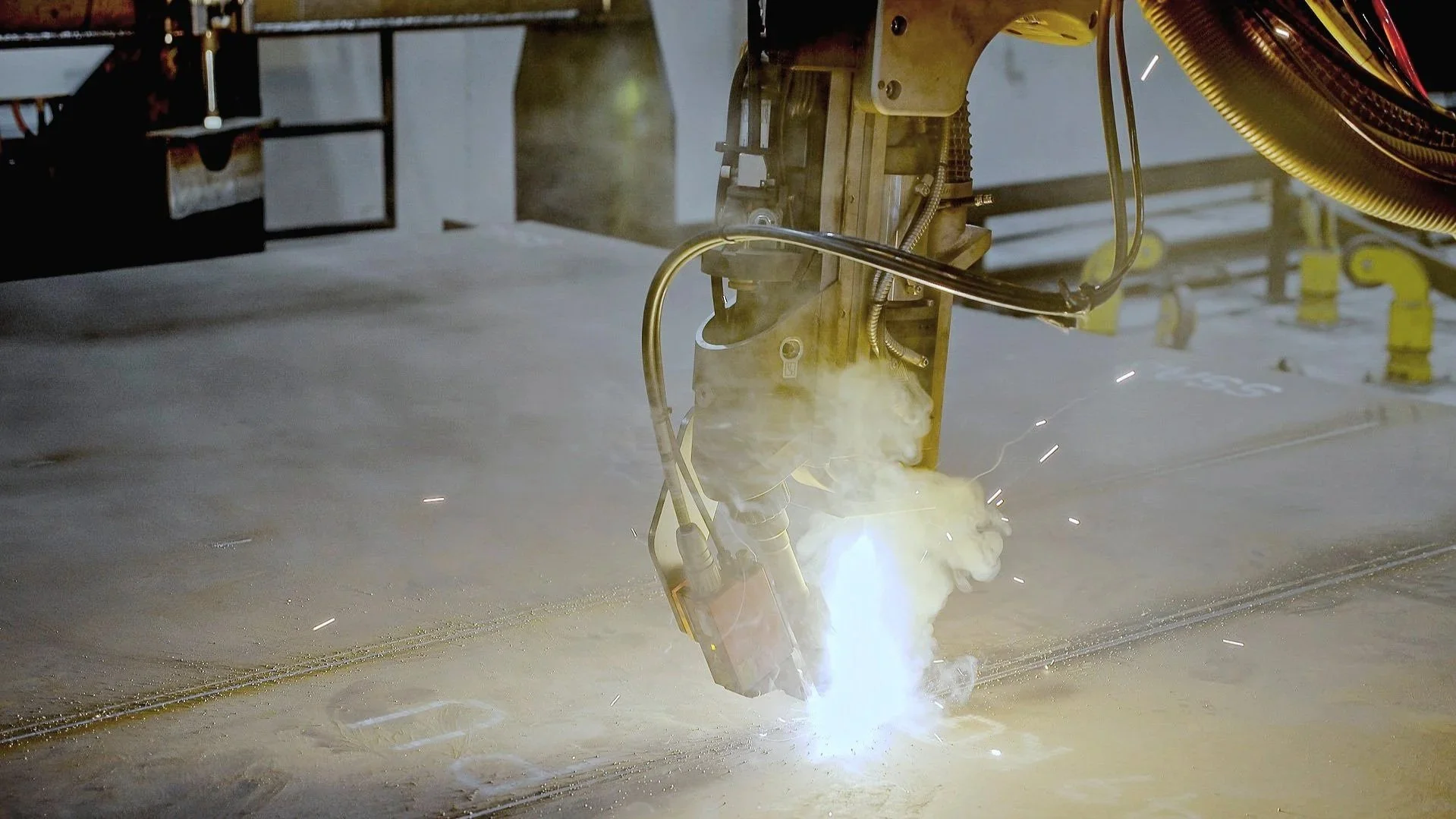Laser Welding
At Prodtex, we don’t just weld — we redefine what’s possible in modern manufacturing.
Prodtex Norge has extensive experience from in-house production and delivery of large steel structures using laser welding technology. Our expertise has been applied in full-scale industrial projects, including infrastructure developments and the aquaculture industry, where precision, strength, and efficiency are essential.
We deliver automated solutions that ensure consistent quality, high throughput, and seamless integration with digital twin environments. These systems are designed to meet the demands of modern manufacturing, combining advanced laser processes with intelligent automation.
Why invest in laser welding technology?
Laser and laser hybrid welding offer unmatched advantages over traditional methods:
Design Innovation: Enables new construction techniques and geometries, such as steel sandwiches and multi-layer plate designs.
Speed & Efficiency: Faster welding speeds and one-sided welding reduce production time.
Minimal Distortion: Low heat input preserves material integrity.
Enhanced Fatigue Resistance: the substantially smaller heat-affected zone (HAZ) preserves the mechanical properties of surrounding material.
Energy Savings: Lowers energy usage, makes laser welding a greener choice for industrial production.
Laser Welding Technology
Laser welding is a high precision joining process that uses a focused laser beam to fuse metal components together. The concentrated energy input allows for deep penetration and narrow weld seams, resulting in minimal distortion and high-quality joints. Laser welding can be performed with or without filler material and is suitable for a wide range of metals, including stainless steel, aluminium, titanium, and high-strength alloys. Key advantages include high welding speed, excellent repeatability, narrow heat-affected zones, and the ability to automate the process for consistent results in demanding production environments.
Laser Hybrid Welding
Laser hybrid welding combines the precision of laser welding with the robustness of arc welding. By merging these technologies, the process benefits from deep penetration and high welding speed from the laser, while the arc provides additional filler material and improved gap-bridging capability.
This makes hybrid welding particularly effective for joining thicker materials and handling less precise joint preparations. It is well-suited for heavy industry applications, such as shipbuilding, offshore structures, and large steel assemblies, where both strength and productivity are critical.
Pure Laser Welding
Pure laser welding relies solely on a focused laser beam to fuse materials, offering unmatched precision and minimal heat input. The result is a narrow weld seam with a very small heat-affected zone (HAZ), which helps preserve the mechanical properties of the base material and reduces post-processing needs.
This method is ideal for applications requiring high-quality, repeatable welds in thin to medium-thickness materials, and is commonly used in automated production environments where speed, accuracy, and cleanliness are essential.
Advantageous Laser and Laser-Hybrid Welding Methods
Laser and laser-hybrid welding technologies offer significant benefits compared to conventional welding methods. These processes enable deep penetration, narrow weld seams, and minimal heat-affected zones, resulting in reduced distortion and improved mechanical properties. They are particularly effective for joining thicker plates in fewer passes, increasing productivity and ensuring high-quality welds.
Stake weld (Lap weld): Hidden T-connections can be achieved by welding through a plate and into structure below, providing strong joints with minimal preparation.
T-Joints, one sided weld: Full penetration of plates from one side using laser-hybrid welding. For thick plates, full penetration can be achieved with bevelled edges.
Butt welds: Plates typically below 10 mm can be joined with pure laser in a single pass without bevelling. For thicker plates, multiple passes with laser hybrid allow full penetration welds.





